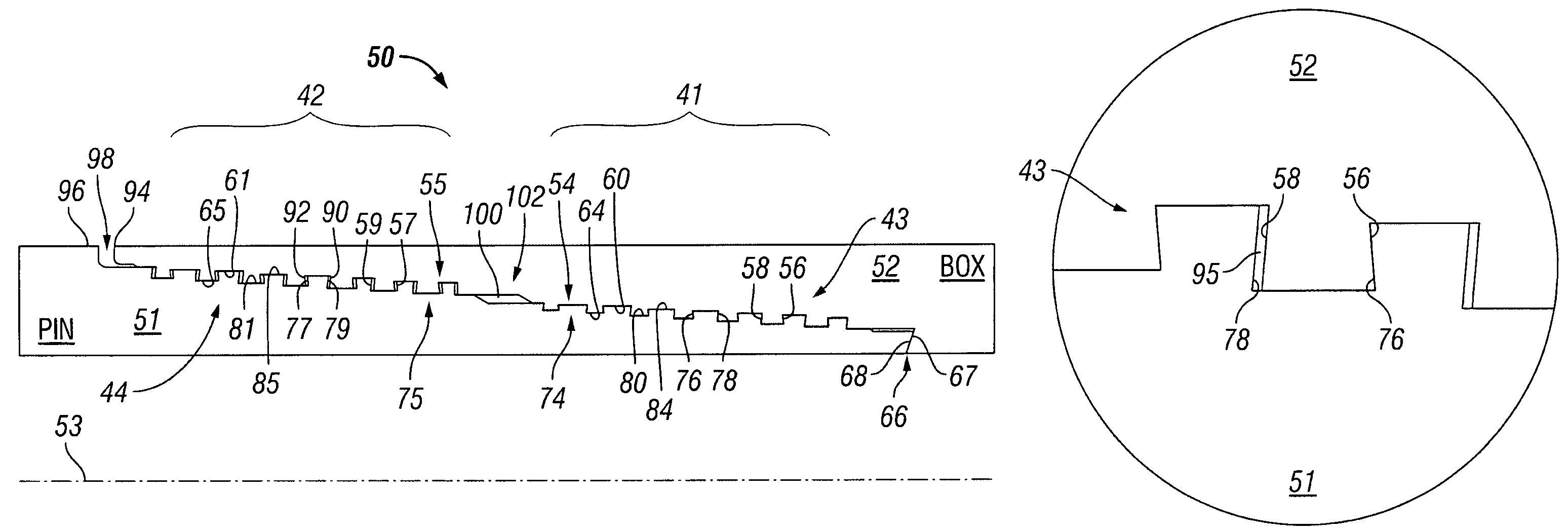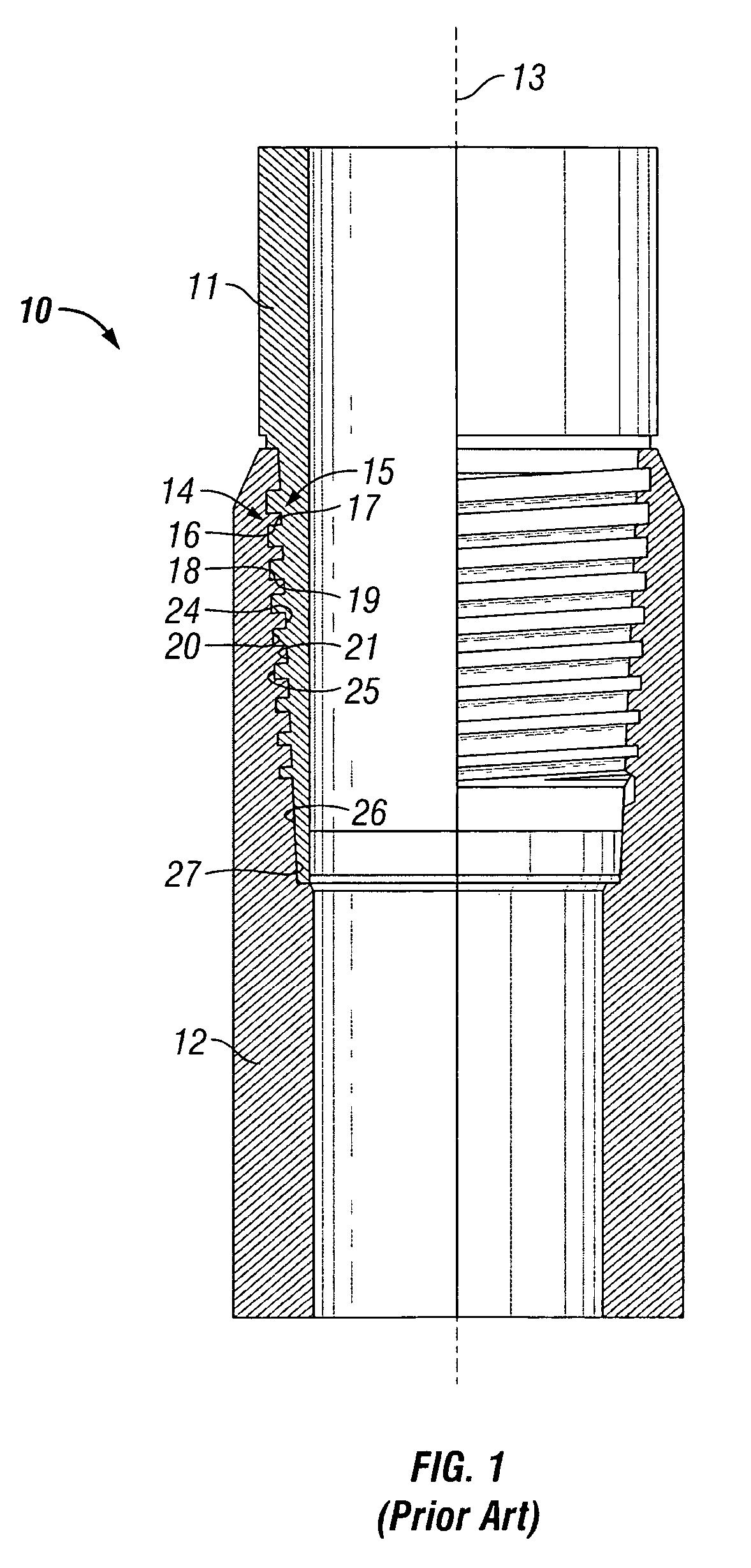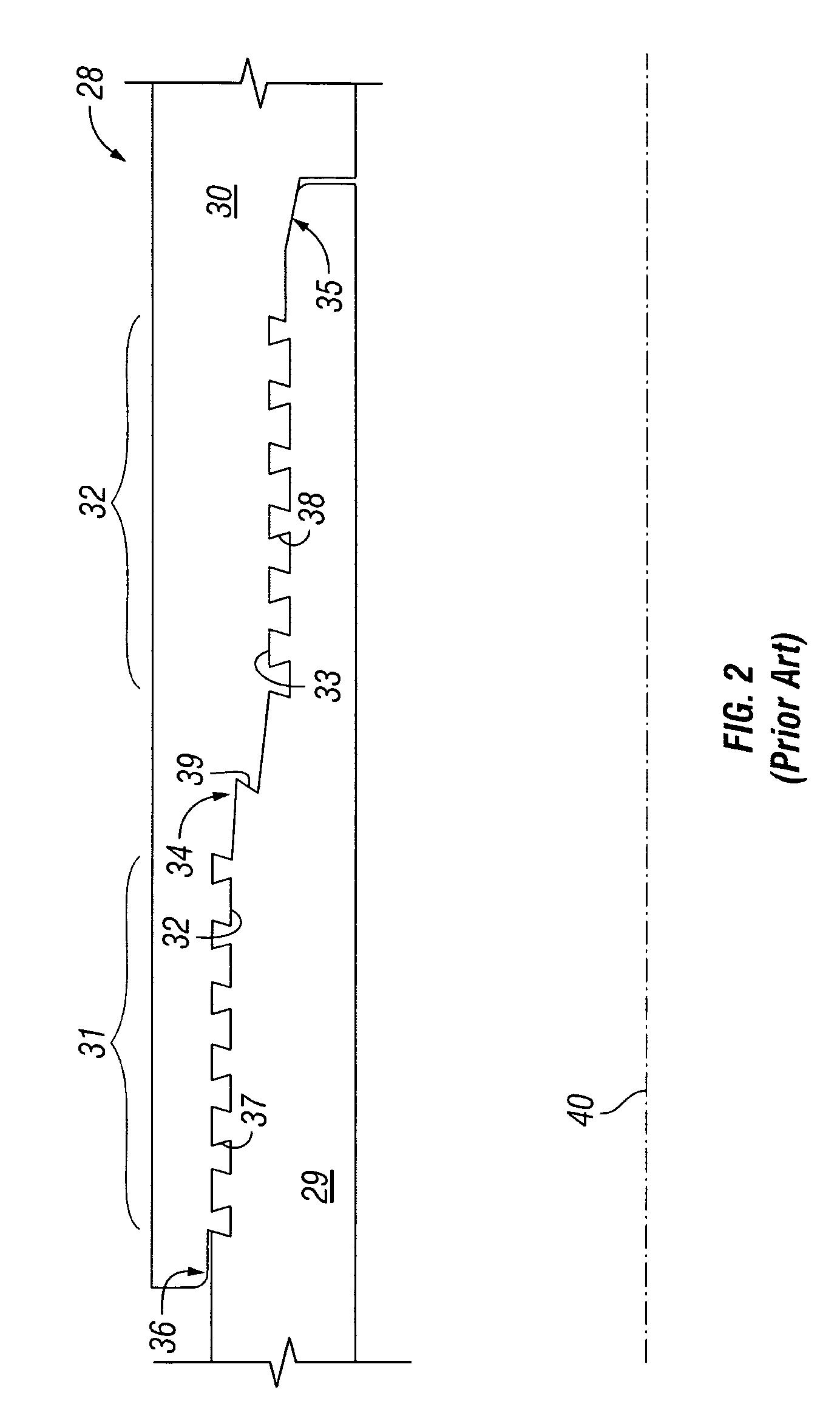Floating wedge thread for tubular connection
a wedge thread and tubular connection technology, applied in the direction of screw threaded joints, hose connections, mechanical devices, etc., can solve the problems of inadequate contact pressure to form a metal-to-metal seal, little etc., to reduce the significant amount of makeup torque, reduce the effect of large applied makeup torque and small elastic deformation of the contacting surface area
- Summary
- Abstract
- Description
- Claims
- Application Information
AI Technical Summary
Benefits of technology
Problems solved by technology
Method used
Image
Examples
Embodiment Construction
[0040]Prior art wedge thread designs offer some distinct advantages over other thread designs which can include high torsion, high compression, and reliable internal and external pressure sealing capabilities. The inventors have found that there are, however, several considerations involved when designing connections using wedge thread technology. An ongoing consideration is the reduction of the amount of torque and work required to makeup the connection. The effect is multiplied by numerous repeated coupling and decoupling of connections associated with using oil field tubular members. A further consideration is to provide a connection that will remain secure and sealed during use. Another concern is to provide connections that can adequately carry cyclic working loads, forces, torques, and bending moments (i.e., having characteristics of tension and compression simultaneously). Other considerations include the inherent wear characteristics, flattening, galling, and fatigue associa...
PUM
 Login to View More
Login to View More Abstract
Description
Claims
Application Information
 Login to View More
Login to View More - R&D
- Intellectual Property
- Life Sciences
- Materials
- Tech Scout
- Unparalleled Data Quality
- Higher Quality Content
- 60% Fewer Hallucinations
Browse by: Latest US Patents, China's latest patents, Technical Efficacy Thesaurus, Application Domain, Technology Topic, Popular Technical Reports.
© 2025 PatSnap. All rights reserved.Legal|Privacy policy|Modern Slavery Act Transparency Statement|Sitemap|About US| Contact US: help@patsnap.com



